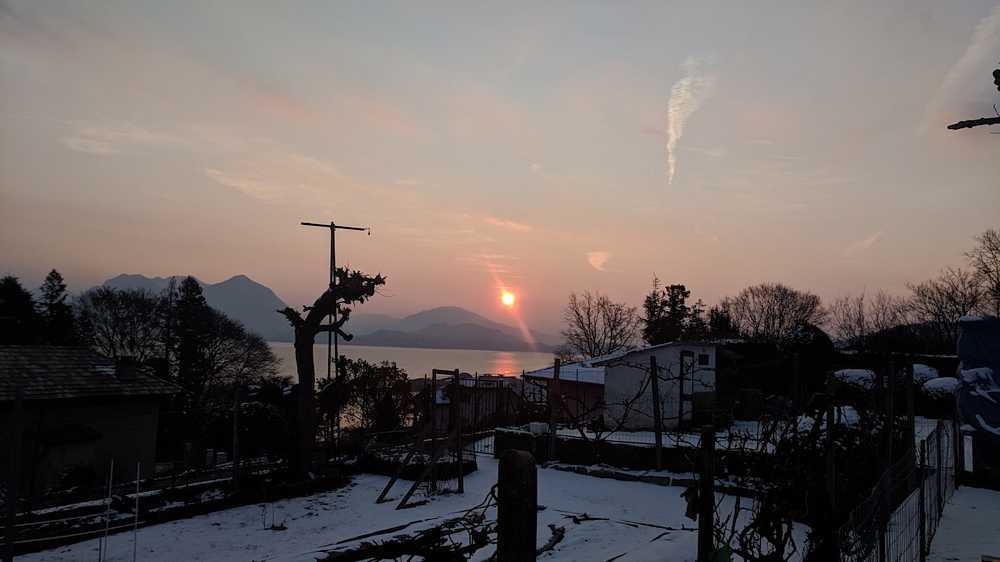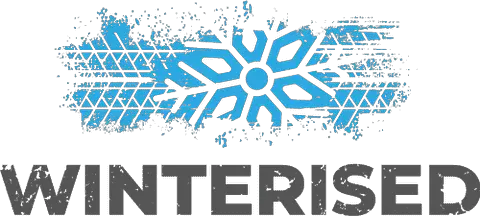You barely even think about your heating systems at home until they stop working (unless you’re a plumber!).
All that changes overnight if you’re deep winter motorhoming … It’s pretty much all you think about because without it – to put it politely – you’re screwed.
It’s the one thing that concerned everyone before we set out on this trip – would we freeze to death in the middle of the night?!
Even through we’re pretty techy people, there are things we had no idea about before we were in the thick of it out in the Alps, and based on the chats we have regularly with people online, it seems as if the issue of heating and hot water is putting some people off a motorhome ski adventure.
The fact is, if you’re in a reasonably modern motorhome, the chances are that you have a robust heating system that can stand up to the worst that the Alps can chuck at you.
As newbies, we only have experience of our own system which is made by Whale – relative newcomers to the motorhome market (although not the heating and water system business – they’ve been making them for years for the marine world) but bringing their A-game to the motorhome systems party!
When Whale discovered that the Winterized Project was carrying their systems on board the Elddis Autoquest 185 we’re travelling in, they made contact and asked for thorough and detailed feedback throughout the trip to see what, if anything they could learn about their products. It’s not often that a component manufacturer has the opportunity to gain real life intel from long term users – especially in alpine conditions and we have been really happy to help.
Testing times
Boy has this system been through it! The first test was the heavy snow in December that blanketed the UK – just as we were testing everything out, working out how our SafeFill gas cylinders worked, figuring out which buttons did what – James familiarising himself with the pipes. So, we knew that a British winter was no match for Whale.
Then came Storm Eleanor. We won’t lie, this was a low point on the trip, not more than a month in and the last thing we expected to be dealing with was persistent heavy rain. A completely different test for the system and here’s where blown air heating systems win over wet heating (radiators). Directional firing of hot air at soggy kit is a godsend – and has the added benefit of providing a perfect ski boot heating system too. Mostly stuck indoors whilst the worst of that wicked weather took hold, it made a wet weekend in Wales seem super appealing! We even had the chance to play host to some not-so-fortunate campers who didn’t have the same quality system in their motorhome which made us particularly smug.
A few weeks later and we were caught up a large mountain in rather brisk conditions that were really set to test us and the van. With no warning, Les Deux Alps was plunged into -15C (the max rating for Grade Three vans) and we were about to find out what this system was made of. Despite a few niggles with our water (we weren’t alone in this!), the heating was as dependable as always and caused the usual evening discussion about whether to choose ‘frost stat’ or ‘night mode’ which has usually been far too warm for us overnight.
We’re learning constantly and the one thing we picked up from this particular period is that horrendous weather is pretty miserable for everyone – whether you’re in a motorhome or a 5* chalet, it’s best avoided… a luxury only available to those with a home on their backs!
And then came The Beast from the East. Fortunately, this climatic event came with fair warning and we made haste from the high Swiss Alps to a pretty Italian lakeside town called Baveno to ride out the worst of the weather. This gave us an opportunity to reset – two and a half months on the road and it’s nice to have a time out to do a full maintenance check on the motorhome – tyre pressures, oil, fluids, pipes – our own mini habitation check too!

We barely noticed The Beast ourselves but that’s largely because we now know that we’ve acclimatised a considerable amount – brought to our attention last week in Austria when surrounded by freezing holiday makers, we barely shrugged at the conditions of -4 and a wind chill of -8 with James complaining of too many layers.
With Easter looming, the weather has definitely turned – currently enduring very heavy snow on the French/Italian boarder, this is the first sign that spring is coming and the melt is imminent. With only six weeks left of our winter motorhome ski tour, we’re sure to put the Whale system under more testing conditions with large fluctuations in temperatures between night and day and we have no doubt that we’ll continue in the comfort we’ve become acustomed to!
Here’s a quick run-down of how we heat our van and water, what it means and why we love it:
- We have a Whale Duo System. Both heating and water work on gas or electric, or a combination of both – super flexible and means if you have hook up you can save gas but you’re free and independent to go off-grid if you like.
- Idiot proof control panel – no fancy digital screens that scoff power (very important for deep winter motorhoming) and extremely user friendly
- Blown air – oh yes! All the benefits of a fan heater without the enormous power consumption
- Being under floor mounted, the hot water heater and the pump don’t take up any cabin space which is pretty important for winter sports enthusiasts!
- Trouble shooting – great YouTube videos if you get any kind of issue – lock outs aren’t uncommon in these conditions with any system and they’re there for your safety – very simple instructions for resetting the system
- Customer service – Whale are keen as mustard to produce excellent products, that stand up to whatever their users want to chuck at them and will go to extraordinary lengths to make sure that their customers customers are happy! A call on New Year’s Eve from the team at Whale to check we were ok and everything was working could be considered above the call of duty but it was most welcome and says a huge amount about this engineering company from Northern Ireland putting their longstanding marine reputation on the line to compete with the big guns in motorhome heating.
There are some down sides to our system worth knowing about…
- Blown air is a little noisier than a wet system. You get used to it and at least you know it’s working!
- Dry air – this sounds like an oxymoron but you need to stock up on moisturiser and make sure you keep hydrated! Dry socks also means dry skin!
- Thermostat positioning – housed in the control panel, logically, this is near the door for ease but that also means the thermostat is sensitive to the door opening and shutting and any minor drafts
- And lastly – to perfect this system, we’d love if it ran on diesel as well as gas and electric – just because the more independent you are in a motorhome the better in our opinion!
Choosing a van for a motorhome ski adventure
It’s pretty important that you have a heating system that suits your needs – many people will choose to stay on well serviced campsites with electric hook up that exceeds the needs of their heating and hot water systems. In these situations, you’d probably be using the showers on site and not in your motohome so your systems are likely to be less stressed.
However, if you’re keen to venture off grid, even for a few days, we’d recommend a dual fuel system that will give you options to run your heating off gas or a generator if necessary. This also applies if you’re considering building a van or motorhome and want something robust to keep you toasty on your motorhome ski travels.
Evangelical about Whale? Yes. And with good reason.
Brought to you from a toasty motorhome:
- Precipitation – solid
- Altitude – 1800m
- Outside temperature – -3 degrees
- Winds – northerly, 14km/h
- Socks – dry

